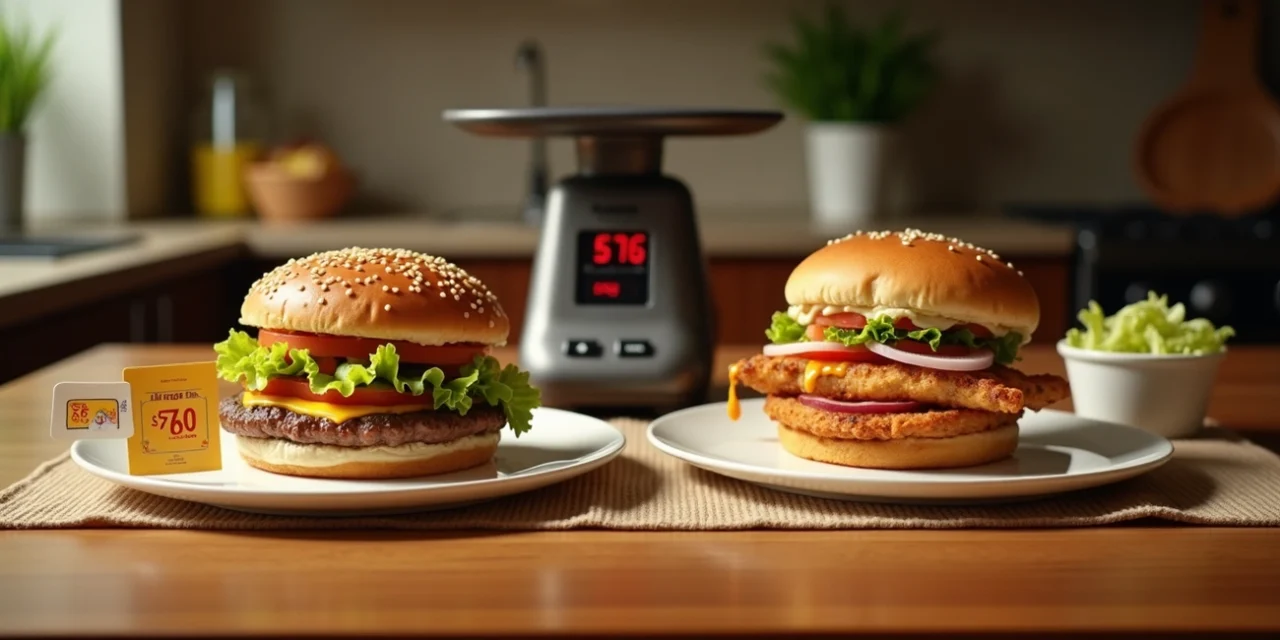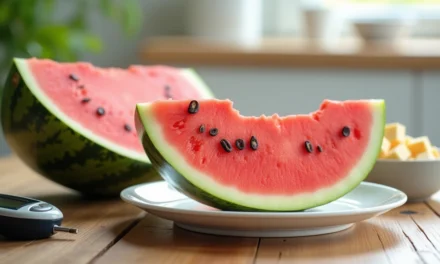The calorie content of Burger King nutrition items might shock you. A single Bacon King sandwich packs 1710 calories, which is more than twice the calories of a regular Whopper at 670-770 calories. These numbers really matter to anyone watching their diet at fast food places.
Looking at Burger King’s menu calories helps customers make better food choices. Their menu items range from the massive Triple Whopper with 1355-1565 calories to lighter options like the Impossible Whopper that contains 630 calories. Menu items that look similar can have very different calorie counts. The Double Whopper with Cheese has 1043 calories, while the Original Chicken Sandwich contains just 680 calories.
This piece breaks down Burger King’s complete menu nutrition facts, points out unexpected calorie sources, and gives you practical ordering tips for 2025. The information here will help you order confidently, whether you count calories or just want healthier fast food options.
Understanding the Burger King Menu with Calories
Image Source: AleaTheas.com
The Burger King menu becomes easier to navigate once you understand how they present their nutritional details. You can make better food choices that match your diet goals with the right knowledge about their nutrition values.
How the menu is structured
The menu layout at Burger King makes browsing simple with clear categories. Here’s what you’ll find in the main sections:
- Burgers – featuring 21 items from the classic Whopper (670 calories) to the hefty Bacon King (1,200 calories)
- Chicken & Fish – including options like Chicken Nuggets (190 calories for 4-piece) and Big Fish Sandwich (570 calories)
- Sides – ranging from French Fries (230-440 calories depending on size) to Onion Rings (200-520 calories)
- Breakfast – with 24 items including Croissan’wich varieties (310-580 calories) and French Toast Sticks (340-500 calories)
- Beverages – offering everything from soft drinks to coffee options
- Desserts – featuring treats like shakes (560-670 calories) and sundaes
This setup helps you quickly find what you want. Each category shows different calorie ranges that let you compare similar food items easily.
Where to find calorie info on the menu
Burger King shares calorie information in several ways. Chain restaurants with 20+ locations must show calorie details on their menus since the Affordable Care Act provisions came into effect in 2010.
You’ll spot calorie information:
- On physical menu boards next to each item price
- On the Burger King website’s nutrition explorer
- In the detailed nutrition PDF available online
- Through the Burger King nutrition calculator that adds up calories for your entire meal
This open approach lets you see exactly what goes into your food. The nutrition resources also show detailed information about fat, sodium, carbohydrates, and protein content for people who track specific values.
Why calorie transparency matters
Calorie details on menus help people make smarter food choices. Studies show that menu labeling leads to lower calorie orders and consumption. A newer study, published in 2020 by researchers looking at over 100 million transactions found a 6% calorie reduction per order after adding calorie labels.
People want this information – 81% of respondents in a national survey supported menu labeling in chain restaurants. About 15% of customers use calorie information to guide their choices.
These changes have pushed restaurants to improve their menus. Burger King added lower-calorie french fry options, showing how transparency leads to better menu choices.
Recent data shows that cutting just 1.8% calories per meal can add up to real results over time. Knowing that a Double Whopper has 920 calories while a Whopper Jr. contains 330 calories helps you pick options that fit your health goals.
The Burger King menu’s nutrition system gives you the power to enjoy fast food while staying healthy. This matters because four out of five Americans check nutrition labels before buying food.
Hidden High-Calorie Surprises to Watch Out For
Image Source: Reddit
Burger King’s nutritional values might shock you, even though calorie information is accessible to more people. Let’s look at some hidden calorie bombs that could wreck your diet plans.
Burgers with unexpected calorie spikes
Burger King’s menu has the Triple Stacker XL Burger as its most calorie-heavy option. This is a big deal as it means that it packs 1,132 calories per serving. A single burger has 69 grams of fat (33 grams saturated) and makes up more than half of a woman’s daily recommended calories.
The Triple Whopper comes close with 1,108 calories and 68.4 grams of fat. This burger gives you 76.2 grams of protein, but it also loads you up with 1,117 milligrams of sodium – that’s almost half your daily limit.
The Bacon King’s nutrition facts deserve a closer look. This monster burger delivers 1,200 calories and a massive 81 grams of fat. The two quarter-pound beef patties with bacon and cheese give you 65 grams of protein, but the calorie cost is steep.
Breakfast items that pack more than you think
The breakfast menu hides many calorie surprises. The King Croissan’wich With Double Sausage leads the breakfast sandwich list with 700 calories. You get 27g of protein, but you’ve used over a third of your daily calories before your day really starts.
The BK Ultimate Breakfast Platter takes things further with 1,190 calories. This morning feast with scrambled eggs, sausage, hash browns, a biscuit, and pancakes with syrup nearly covers your entire day’s calories.
The Egg-Normous Burrito matches its name with 910 calories. It’s stuffed with crumbled sausage, thick-cut bacon, eggs, hash browns, and creamy sauces. That’s more than double the Hash Brown Burrito’s 370 calories.
Sneaky sides and sauces
Side items and sauces can quietly add to your calorie count. A large order of onion rings hits 500 calories, and a large serving of French fries adds 430 more calories.
Those tiny sauce packets seem harmless, but they add up fast. Multiple packets can pile on 300-400 extra calories. Your nugget-dipping habit could double your meal’s calories without you noticing.
Combo meals can be another trap. The Bacon King combo with large fries and a chocolate Oreo shake can reach 2,300 total calories. That’s more than most adults should eat in an entire day.
These nutrition facts help you make smarter choices at Burger King. You can skip these high-calorie items or plan your other meals around them to stay on track with your diet goals.
Smart Swaps: Healthier Alternatives on the Menu
Image Source: Eat This Not That
Need help navigating Burger King’s menu to make smarter choices? You can cut calories without giving up taste. The menu has several nutritious options that you might not know about.
Low-calorie burger options
The Whopper Jr. is a top pick that dietitians recommend. It packs the classic Whopper taste into a 330-calorie package with 18g of fat. This smaller version tastes great and has about half the sodium of the original Whopper.
The plain hamburger is an even lighter choice with 250 calories and 10g of fat. It’s one of the better options on the menu with just 560mg of sodium.
Plant-based fans can try the Impossible Whopper at 630 calories. The burger uses soy and potato protein to deliver 25g of protein with less saturated fat than beef options. Just watch the sodium – it comes in at 980mg per burger.
Better breakfast picks
The Egg and Cheese Croissan’wich leads the pack as Burger King’s healthiest breakfast option to keep blood sugar stable. You get 15g of protein from eggs and cheese in a 372-calorie package. The nutrition breaks down to 21.5g total fat, 11g saturated fat, and 31g carbohydrates.
Want a different base? The Egg and Cheese Biscuit is similar but slightly higher at 412 calories. The Ham, Egg and Cheese Croissan’wich bumps up the protein to 21g while staying at 412 calories.
Sides and drinks with fewer calories
Craving something crispy? Skip the medium or large fries and grab a small hash browns instead. It has 290 calories with 19g fat and 29g carbohydrates. Some locations even offer apple slices as a lighter side option.
The unsweetened iced tea has zero calories, carbs, and sugars. Black coffee and water are also great zero-calorie options that won’t affect your blood sugar. Dietitian Vanessa Imus puts it well: “Don’t waste your calories on sugar-laden sodas or juices”.
Here are some smart ways to cut calories while eating at Burger King:
- Get mayo and creamy sauces served on the side
- Pick Jr.-sized burgers instead of full-sized ones
- Take your time eating to feel full sooner
These simple swaps let you enjoy your Burger King favorites while you retain control of your nutrition.
Decoding Burger King Nutrition Facts by Category
Here’s a detailed look at Burger King’s menu categories and their nutritional values to help you make informed choices on your next visit.
Burgers and sandwiches
The classic Whopper sandwich packs 670 calories and 39g of fat. Add cheese and you’re looking at 760 calories with 46g of fat. The Double Whopper takes it up a notch with 920 calories and 58g of fat, and doubles the protein to 52g compared to the regular Whopper’s 31g.
The Bacon & Cheese Whopper sits at 820 calories, while lighter choices like the Whopper Jr. contain just 330 calories. A simple Hamburger might be your best bet with only 250 calories, 10g of fat, and 13g of protein.
Chicken and fish
Chicken options come with less fat. The Classic Royal Crispy Chicken Sandwich has 600 calories and 31g of fat, plus a hefty 31g of protein. Chicken nuggets’ calories change by a lot based on portion size: 4 pieces have 190 calories, 6 pieces have 290 calories, and 20 pieces jump to 970 calories with 62g of fat.
Chicken Fries (9-piece) clock in at 260 calories, making them a middle-ground option.
Sides and desserts
French fries start at 230 calories for value size and go up to 440 calories for large size. Onion rings pack more calories per serving, with value size at 200 calories and large at 520 calories.
Sweet tooth? The HERSHEY’S Sundae Pie contains 310 calories with 18g of fat. A lighter option is the Soft Serve Cone with 200 calories and just 5g of fat.
Beverages and coffee
Black coffee (BK Café Coffee) has zero calories whatever the size. All the same, flavored drinks pack more calories – a 12 fl oz Vanilla Iced Coffee has 150 calories, 8g of fat and 21g of sugar.
The 16 oz Vanilla Iced Coffee contains 200 calories, while the 20 oz size reaches 260 calories. Mocha versions run slightly higher than vanilla, with a 12 oz Iced Mocha Coffee containing 180 calories.
Tips for Smart Ordering at Burger King in 2025
Image Source: Marketing Dive
Smart ordering techniques help you make better choices about burger king nutritional value. Your meal’s nutritional profile improves when you know how to direct your way through the menu.
Use the Burger King nutrition calculator
The online Burger King nutrition calculator lets you total up calories and other nutrients for your whole meal. This digital tool gives you accurate, live nutritional information as you build your meal. You can adjust your selections based on personal dietary goals, beyond just counting calories.
Watch portion sizes
Jr.-sized burgers and value-sized fries (the smallest size) help reduce calories and saturated fat while you enjoy your favorite items. Taking mayo off a Whopper saves about 157 calories. A small order of fries instead of large saves hundreds of empty calories.
Avoid combo traps
Combo meals pack a heavy caloric punch. A Bacon King combo with large fry and chocolate Oreo shake is a big deal as it means that 2,300 total calories. Your drink choice adds many calories, so water, black coffee, or unsweetened tea make better alternatives.
Customize your order for better nutrition
Request mayo and creamy sauces on the side. Here’s what else you can do:
- Ask for extra lettuce, tomatoes, and pickles to add nutrients at no cost
- Take off high-calorie toppings like cheese and bacon
- Use mustard or ketchup instead of mayonnaise to cut calories
Conclusion
Knowledge about Burger King’s menu nutrition helps us make better choices that match our health goals. The difference between a Triple Whopper at 1,108 calories and a Whopper Jr. at just 330 calories shows how portion control affects our daily intake. Creamy sauces, large sides, and sugary drinks can turn a reasonable meal into excessive calories without us noticing.
You can enjoy Burger King while keeping a healthy balance by making smart swaps. The menu offers smaller portions, plant-based options, and ways to customize your order. Taking mayo off your Whopper cuts about 157 calories, and choosing water over a shake saves hundreds more.
The Burger King nutrition calculator helps you plan before ordering. This tool lets you create meals that taste great and stay within your health goals. Fast food doesn’t have to be unhealthy. Smart portions, menu awareness, and careful customization let you fit Burger King visits into a balanced diet.
Note that little changes make a big difference. A Jr. burger rather than a Triple Stacker, sauce on the side, or extra veggies on your sandwich all add up to better nutrition. These tips will help you order smarter the next time you’re at Burger King’s counter or drive-thru.
FAQs
Q1. What are some healthier options at Burger King?
Some healthier choices include the Whopper Jr. (330 calories), plain hamburger (250 calories), and Impossible Whopper (630 calories). For breakfast, consider the Egg and Cheese Croissan’wich (372 calories). Opt for side salads or apple slices instead of fries when available.
Q2. Does Burger King use real beef in their burgers?
Yes, Burger King uses 100% beef for their signature hamburger patties. The patties are grilled on a proprietary broiler over real flames for 2-3 minutes, depending on the burger’s size and thickness.
Q3. What is considered the most calorie-dense item on the Burger King menu?
The Triple Stacker XL Burger is one of the most calorie-dense options, containing 1,132 calories. Other high-calorie items include the Triple Whopper (1,108 calories) and the Bacon King (1,200 calories).
Q4. How can I reduce the calorie content of my Burger King meal?
To reduce calories, choose Jr.-sized burgers, remove high-calorie toppings like cheese and bacon, ask for sauces on the side, and opt for water or unsweetened tea instead of sugary drinks. Using the online nutrition calculator before ordering can also help you make informed choices.
Q5. Are there any low-carb options available at Burger King?
While Burger King’s menu is generally high in carbs, you can reduce carb intake by ordering burgers without the bun, choosing grilled chicken options, or opting for side salads instead of fries. Always check the nutrition information for specific menu items to find the lowest carb options available.





